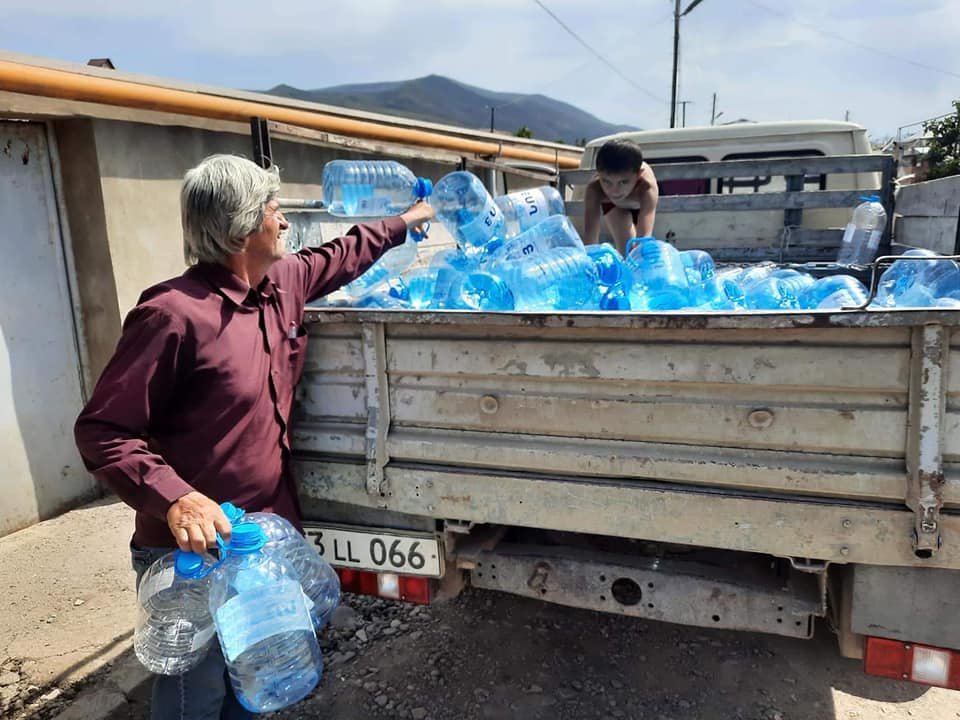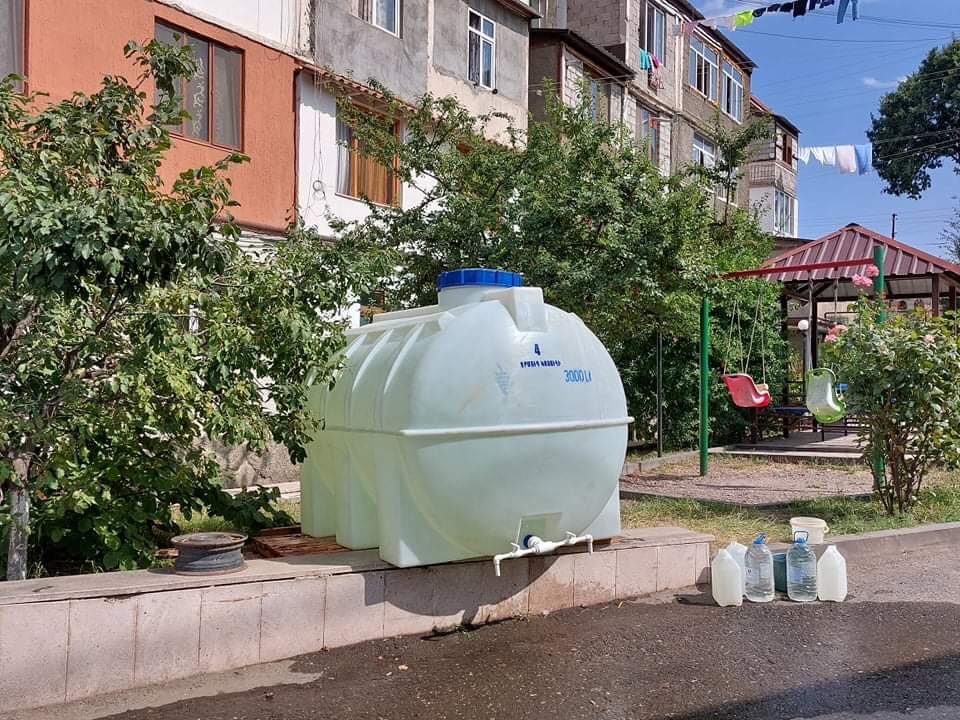The capital city of Artsakh is approaching the end of its third week without water.
Since August 7, access to water in 30-percent of Stepanakert has been inconstant. In some neighborhoods, the water supply activates at random hours of the night, while in others, residents go entire days without water.
Local officials attribute the water shortage to rising temperatures and a population increase, as a result of which water reserves at the city’s treatment plants have been depleted. Officials say the water levels of the Megaghet and Hraget rivers that feed Stepanakert have reduced by half, while the Vararak river has entirely run dry.
According to Gagik Boghosyan, head of Artsakh’s plumbing and sewage company, the water crisis is largely the result of demographic changes following the end of the 2020 Artsakh War. “After the war, the population of Stepanakert increased sharply,” he told Hetq. “Naturally as more people reside here, more water is used. Only 10-percent of the problem can be linked to the drought. It has not rained for a month.”
Following the concession of more than half of the territory of the Republic of Artsakh, including its seven outlying territories, to Azerbaijan, thousands of refugees have resettled in the capital city. The government of Artsakh estimates that its population has reached 60,000—a 30-percent increase from September 2020.
In the short-term, the government has mobilized to distribute water across the city. Fire trucks deliver water to high-rise residential buildings every day as part of an initiative launched by the Artsakh Ministry of Emergency Situations to provide water to the communities most severely impacted. Elderly people and people with disabilities can call a hotline to request water deliveries to their doorstep.
On August 10, the municipality of Stepanakert ordered a moratorium on water use at swimming pools and other recreation areas as well as car wash facilities.

Cities across Artsakh have also pooled their resources to assist their capital. Civilians from Askeran have donated hundreds of water bottles to the municipality, which fills them with water from the town’s water fountains and transports them to Stepanakert.

The International Committee of the Red Cross has installed cisterns near residential buildings, while HALO Trust, the only other foreign non-profit organization operating in Artsakh, has delivered water to over 300 families. On August 19, the Russian peacekeeping contingent, which has been stationed in Artsakh since the end of the 44-day war, has also been providing the population with water.
On August 16, Artsakh President Arayik Harutyunyan announced the construction of a pipeline within the next year to connect Stepanakert’s water supply system to the Patara river and prevent future shortages. The government also plans to construct the Patara reservoir, a 15 billion dram (approximately $30 million) project that will provide Stepanakert and a dozen communities in the Askeran region with water and irrigate 2,500 hectares of farmland.
Some have speculated that Azerbaijan manufactured the water crisis by diverting the Karin Dak (Dashalty) river. However, Artsakh officials have dismissed these rumors, insisting that the prolonged drought and population increase are responsible for the shortage.
Prior to the end of the war, Artsakh was poised to secure its water and environmental resources entirely. However, territorial losses endanger Artsakh’s water security, a threat that is compounded by climate change and global water scarcity.
Artsakh relies on the Kelbajar region, one of the seven territories conceded to Azerbaijan, for nearly 85-percent of its drinking water supply, which is carried in by the Terter and Khachen rivers. The republic’s primary water source now lies under Azerbaijani control, provoking fears that Azerbaijan could decide to inhibit the free flow of water to Artsakh.
The Ministry of Foreign Affairs of Artsakh penned a letter to the OSCE Minsk Group on May 7 requesting an international monitoring mechanism in Kelbajar to ensure the water rights and security of the Armenian population of Artsakh. “Currently approximately 98-percent of the water used in the Republic of Artsakh originates in Karvajar (Kelbajar),” the letter reads. “The Arpa River and Vorotan River—which provide water to Lake Sevan, where 80-percent of Armenia’s water resources are concentrated, and without which Lake Sevan would face an ecological catastrophe—originate in Karvajar, too.”
Without intervention, the “Artsakh people’s basic right to water—and, as such, their very existence—will be endangered, yet again,” the letter warns.



Seattle went 51 days without rain this summer. Water shortages are unfortunately bound to become the norm (despite what Fox News says).
How clueless and tone deaf one has to be to compare way torn, devastated Stepanakert to Seattle.
Yes, Lucy. That is the way the Left thinks.